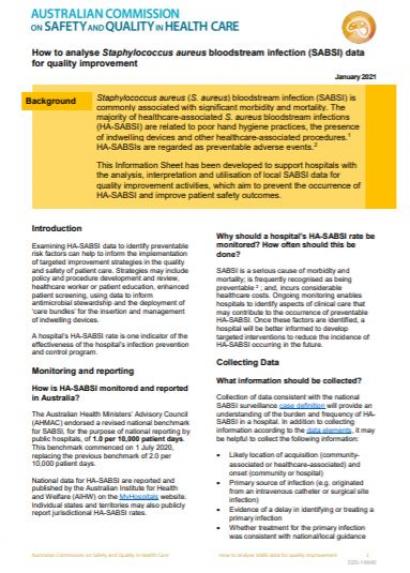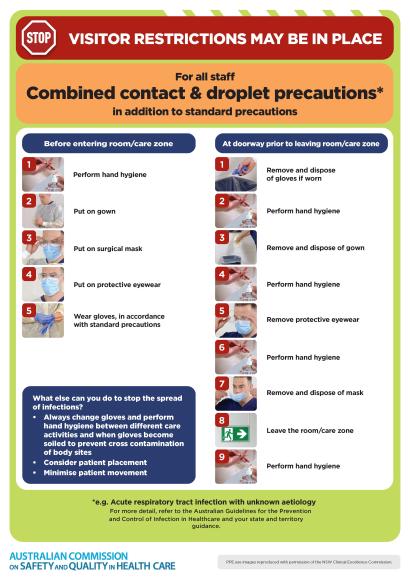This standard describes the care you should expect to receive if you have a cannula or 'drip'. Find out more about what the standard means for consumers and the information available.
Missed a recent webinar? Want to review the content from a past session? Check out the Program Series Webinar archives for recordings of past events. Access to the archives is free and a great way to review session tips or check out webinars that you have missed.
Guidance for clinicians on the ten evidence-based quality statements from the clinical care standard, as well as helpful resources.
The standard has been endorsed by a range of health service organisations listed below. You will also find information about the Working Group established to provide clinical advice, expertise and consumer input during the development of the standard.
Quality statement 10
A patient with a PIVC will have it removed when it is no longer needed or at the first sign of malfunction or local site complications. A new PIVC will be inserted only if ongoing peripheral vascular access is necessary, consistent with the replacement recommendations in the current version of the Australian Guidelines for the Prevention and Control of Infection in Healthcare.
This chapter provides a high level overview of the health system's response to the Australian Atlas of Healthcare Variation series (the Atlas series). It identifies the levers used to implement change and includes practical case studies.
The Escalation Mapping Template (EMT) will help to determine which processes for recognising and responding to deterioration in a person’s mental state are working effectively, and identify if there are any problems and/or gaps in current processes.
The Commission wishes to acknowledge the significant contribution of its steering committee members in the development of the Better Care Everywhere program series.
Quality statement 6
After repair of a third or fourth degree perineal tear, a woman receives postoperative care that includes the opportunity for debriefing, physiotherapy and psychosocial support.
Quality statement 5
When a woman has a third or fourth degree perineal tear, it is promptly repaired by an appropriately trained and experienced clinician, in a suitable environment.
This standard supports a woman-centred approach, so women are informed about their risk of a third or fourth degree perineal tear and supported to make decisions and provide informed consent for the care they receive during pregnancy, labour and birth.
Quality statement 7 - Cataract Clinical Care Standard
A patient receives an intracameral antibiotic injection at the time of cataract surgery, in preference to postoperative topical antibiotics and according to evidence-based guidelines. After surgery, a patient receives anti-inflammatory eye drops when indicated.
Quality statement 6 - Cataract Clinical Care Standard
Options for a patient with bilateral cataract are discussed when the decision about first-eye surgery is being made. Second-eye surgery is offered using similar criteria as for the first eye, but the potential benefits and harms of a delay in second-eye surgery are also considered, leading to a shared decision about second-eye surgery and its timing.


